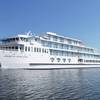Solomon Islands Capital Needs to relocate to Combat Tsunami
BMT WBM (BMT), a subsidiary of the BMT Group, a leading international maritime design, engineering and risk management consultancy, has partnered with Buckley Vann town planners and the School of Civil Engineering at the University of Queensland to develop a comprehensive climate change adaptation plan for the provincial capital of Choiseul in the Solomon Islands.
The capital is located on Taro Island, a small coral atoll within Choiseul Bay, mostly less than two metres above mean sea level. Coastal hazards such as tsunami and ocean storms present a significant risk to the Taro Island community, and these hazards will be compounded in the future with climate change and sea level rise in particular.
The climate change adaptation plan for Choiseul Bay, funded by the Australian Government’s Pacific-Australia Climate Change Science and Adaptation Planning (PACCSAP) programme, details the staged relocation of the Choiseul capital to the adjacent mainland. This is the first time anywhere in the Pacific Islands that a provincial capital with all its services and facilities will be relocated due to coastal hazards and climate change. Dr Philip Haines, project manager for BMT, said “relocation is the only option available that will keep the community safe and will allow for future growth and prosperity of the capital and the province”.
The multi-disciplinary team of engineers, scientists and planners consulted extensively with the Choiseul Bay communities to formulate a vision and future town layout that reflected the needs and values of the local Lauru people, as well as avoiding areas affected by existing and future hazards. The Premier of Choiseul Province, the Honourable Jackson Kiloe, commented on the consultation “the project followed the ways of our traditions – talking with people, listening to people and reflecting the desires of the people”.
As relocation of the capital will take many decades to complete, the adaptation plan also detailed actions to increase the community’s resilience to coastal hazards in the interim. This included the preparation of a tsunami response plan, and the handover of a hand-wound siren to alert the local communities of a tsunami warning. The Honourable Premier continued, “The project team has identified practical steps that are within our means to adapt to natural hazard risks, especially tsunami, which is of great concern to our people”.
The project is now being hailed by the Solomon Islands National Government as a best practice model for natural hazard resilience planning in other provinces across the Solomon Islands and more broadly across the Pacific region.













